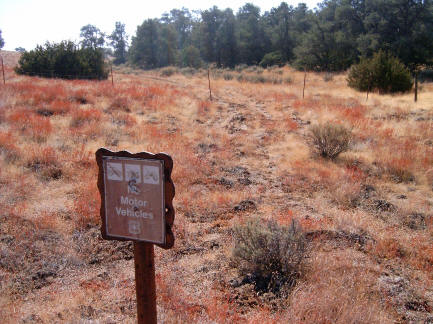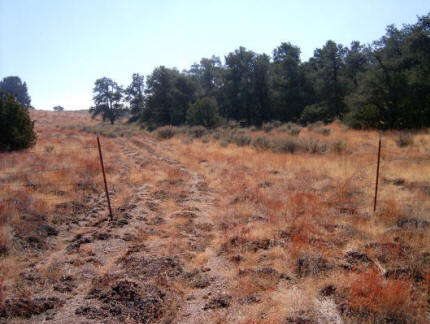|
November 9,
2005
FOREST SERVICE ANNOUNCES NEW
REGULATIONS TO CONTROL RENEGADE
OFF-ROAD VEHICLE ABUSE
Rules Could Reduce Damage Caused
by Irresponsible
ORV Enthusiasts on Los Padres National Forest
Washington, D.C. – The Forest Service today published new
regulations to control unlawful off-road vehicle (ORV) use, one
of the four key threats facing the Los Padres and other national
forests across the country. The new regulations require ORVs to
stay on designated roads, direct the Forest Service to identify
illegally-created ORV trails on each forest, and order the
closure of any trails that are damaging sensitive areas.
The new regulations respond to growing conflicts between ORVs
and other forms of forest recreation, like hiking, horseback
riding, and mountain biking. ORV use is one of the
fastest-growing activities on national forest lands across the
country, and officials expect ORV use to jump 20% on the Los
Padres over the next decade.
The new regulations prohibit
ORVs from traveling off of designated routes. ORVs cause the
most damage when they travel cross-country, creating new trails
through pristine areas. Forest Service officials estimate that
at least 60,000 miles of illegal trails exist today in national
forests across America, including over 160 miles in the Los
Padres National Forest.
Because these roads don’t go
through the normal planning and design process, they often cause
the most erosion and damage to sensitive habitats.

Above: An illegal ORV
route in the Los Padres National Forest. Officials have posted a
"NO MOTOR VEHICLES" sign at this location, to no avail.
Below: Officials
placed a barbed-wire fence across this illegal trail to prevent
access, but renegade ORV enthusiasts armed with a pair of wire
cutters vandalized the fence, and continue to damage this area.
Photos © LPFW, Inc.

The new regulations require the Forest Service to document all
roads and trails used by motorized vehicles on the Los Padres
National Forest and other forests across the country. Officials
must then identify which of these roads will remain open to
motorized use, and which roads will be closed to motorized use.
The regulations also establish a process to allow public input
and participation in the agency’s decision to open or close
areas.
Also under the new regulations, the agency must monitor roads on
the forest, close and restore roads that are no longer needed,
and temporily close roads that are causing “considerable adverse
effects” on watersheds, wildlife, or other sensitive resources.
ForestWatch and other conservation organizations applauded the
new regulations, but also noted that they set out a long,
multi-year process that fails to reflect the urgent need for
immediate action. The new regulations also provide loopholes
and reduce public comment periods. Our preliminary analysis of
the new regulations is found below.
The agency
released draft OHV regulations in July 2004. The agency received
over 80,000 public comments, with the vast majority supporting
increased management of OHVs on national forests. You can read
comment letters signed by 290 conservation organizations and 75
scientists by clicking the link at the top of the page.
Existing
ORV Routes on Los Padres
More than
200,000 miles of forest roads across the country are currently
open to OHV use as well as more than 36,000 miles of trails. The
Los Padres contains 880 miles of OHV routes and other jeep
roads, plus a growing network of 160 miles of illegal
trails. The Forest Service recorded more than 1,700 violations
on the Los Padres last year.
Forest Service Chief Dale Bosworth recently declared ORVs to be
one of the four greatest threats facing our nation’s forests. The
White House Council on Environmental Quality has stated that
“off-road vehicles have damaged every kind of ecosystem found in
the United States.” ORV abuse was cited in a recent report that
identified the Los Padres as one of the twelve most endangered
forests in the nation.
Impacts from ORV Abuse
Noise and pollution from ORVs degrade wilderness experiences,
trample vegetation, cause severe soil erosion, encourage the
spread of invasive weeds, and harm wildlife. On the Los Padres,
officials have documented “almost daily” damage to Native
American cultural sites caused by irresponsible ORV
enthusiasts. For a more in-depth look at the damage caused by
ORVs, see our ORV web page.
Next Steps
ForestWatch
will work to ensure that the agency identifies all roads
and trails in its inventory. During the public comment period,
ForestWatch will work to ensure that no new ORV routes are
designated in the Los Padres, and that all illegal trails are
rehabilitated. In the meantime, we will also continue to conduct
our on-the-ground field monitoring to ensure that existing roads
are not causing damage to sensitive forest resources, in
accordance with the new regulations.
ForestWatch Analysis of
New ORV Regulations
Unneeded Roads Identified and
Rehabilitated
Officials
must identify the minimum amount roads needed for
administrative uses like resource protection and fire
suppression; recreational uses like camping, hiking trails, and
off-road vehicle routes; and consumptive uses like oil and gas
drilling, mining, off-road vehicle use, recreation areas, and
livestock grazing. These uses are set out in the new Forest Plan
for the Los Padres National Forest, approved in September.
To calculate
the minimum road system needed, the new regulations require a
“science-based roads analysis” and public involvement. The
agency must also take into account long-term funding
expectations, and ensure that the road system “minimizes adverse
environmental impacts.”
Unneeded
roads will either be decommissioned (restored to their natural
state) or transformed into trails. Forest officials must give
priority to decommissioning those unneeded roads that pose the
greatest risk to public safety or to environmental degradation.
Designating Roads and Trails
for OHV Use
The new
regulations require the Forest Service to officially identify
which roads and trails will be open to use by OHVs and other
motor vehicles. Under the new regulations, the public must be
allowed to participate in the designation of OHV and other motor
vehicle routes.
However, the
new regulations restrict the amount of time that the public has
to view the agency’s proposed designations. Under the previous
regulations, the public had 60 days to review. Under the new
regulations, the public only has as little as 45 days to review
the agency’s entire route designation plan.
To help the
agency decide which roads and trails to open for OHV and other
motorized use, officials must “consider” effects on the
following, “with the objective of minimizing:”
-
Damage to
soil, watershed, vegetation, and other forest resources
-
Harassment of wildlife and significant disruption of
wildlife habitats
-
Conflicts
between motor vehicle use and existing or proposed
recreational uses
-
Conflicts
among different types of motor vehicles; and
-
Sounds
and pollution near populated areas.
Unfortunately, the new regulations do not require the Forest
Service to actually minimize these effects. Instead, officials
need only to "consider" the effects "with the objective of
minimizing" them. This falls far short of what is required
by long-standing presidential Executive Orders 11644 and 11989,
which require that
"[off-road vehicle] areas and trails
shall be located to minimize damage" and "conflicts."
This is also a
significant departure from the previous regulations, which
stated that OHV routes “shall be located to minimize” damage to
forest resources.
ForestWatch
will now work to make sure that the Forest Service takes all
necessary steps to minimize effects of roads and OHV use.
OHVs Must Remain on Designated
Routes
The new
regulations prohibit OHVs and other motor vehicles from
traveling off of designated routes. Motor vehicles that go
cross-country will be subject to a fine of up to $500 and/or 6
months imprisonment.
The Los
Padres National Forest already requires OHVs to remain on
officially-designated routes, so this portion of the new
regulations will not change anything here. ForestWatch will
continue to work to ensure that the agency monitors ORV use and
issues citations for irresponsible violators.
Monitoring & Closure of Roads
Causing Environmental Damage
Previous
regulations stated that the effects of ORV use "will be
monitored." The new regulations add a loophole to this important
requirement. Each national forest must now monitor the effects
of OHV and other motor vehicle use “as appropriate and
feasible.”
If motor
vehicle use is causing “considerable adverse effects on public
safety or soil, vegetation, wildlife, wildlife habitat, or
cultural resources,” then Forest Service officials must
immediately close the road. The road must remain closed until
the agency puts measures in place to reduce or eliminate the
damage.
ForestWatch
will work to identify areas where OHVs are inflicting
considerable adverse effects, and will report these areas to the
agency so that officials can take corrective action.
Forest Publications
The new
regulations require each national forest to develop a “forest
transportation atlas,” which will show the location and
condition of all roads and trails. The agency must also publish
a “motor vehicle use map” showing the types of vehicles allowed
on certain roads and trails, and the times of year that motor
vehicle use is prohibited.
Each national
forest must also prepare a “program of work” each year,
describing the construction, maintenance, and enforcement needs
for OHV routes and other roads and trails.
|

